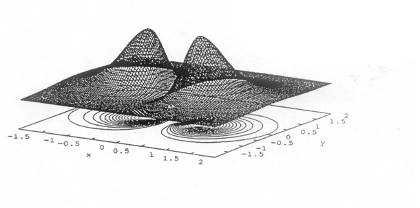The Research Technology Institute (ITE) of Crete has made progress in discovering new materials for the creation of "solar fuels". In a related announcement, ITE explained that "the methods of the electrochemical photolysis (ECP) of water (H2O) on the one hand and the photocatalytic reduction of carbon dioxide (CO2) on the other are two of the most promising techniques for the production of clean fuels using solar energy".
And that "in a series of recent publications, Dr. Antonis Andriotis (of IHDL/ITE) in collaboration with Professor Madhu Menon (of the University of Kentucky in Lexington, KY, USA) predicted that enrichment of the GaN [gallium nitride (Ga)] material with antimony (Sb) impurities allows the manipulation of its energy gap range.'
Mr. Andriotis himself explained to us that "with the term solar fuel we refer to fuels produced using solar energy. Classic examples are the production of hydrogen and reduction derivatives of carbon dioxide (e.g. methane)'.
Dr. Antonis Andriotis Dr. Antonis Andriotis He pointed out:
“My research is theoretical and basic tool my computer. My research focuses on the part of this research that concerns the production of hydrogen through the photo-electrochemical splitting of water. In particular, it concerns research to identify materials that can be used for this purpose. As I mention in the press release, the materials that can be used for the electrochemical splitting of water must have certain properties. However, materials with such properties are rare in nature. We have to make them, compose them.
Research in this area therefore focuses on finding such (technically created) materials that meet the necessary conditions. This can, of course, be done in the laboratory where the "trial and error" method can be used to experiment and test compositions of new materials. However, this experimental process is time consuming, uneconomical and limited to a small number of compositions.
On the other hand, theoretical research helps in this direction since it can "synthesize" an unlimited number of new materials and identify materials with the properties we want in a fast and economical way. This is done with various models of theoretical calculations with the use of computers.
In this way we can consider a multitude of potential new systems quickly and at minimal cost. Thus, the experimental identification of potentially suitable materials is minimized. Simply, if the theoretical calculations have clear indications of a new material that they have identified and which may be suitable in this process, then the experimental team undertakes to confirm or not the theoretical conclusions. This also happened in our case as stated in the press release".
"Following the experimental confirmation of the suitability of the material we predicted, this material is offered for commercial exploitation in order to be used as a photoelectrochemical component of the photolytic water electrolysis".






